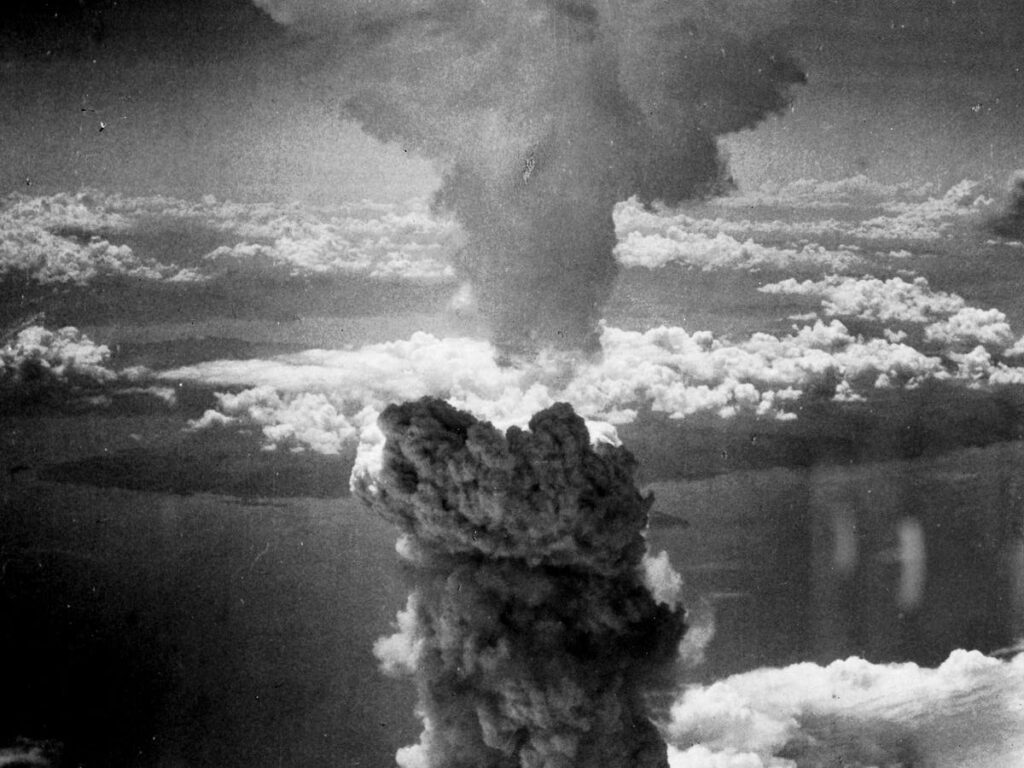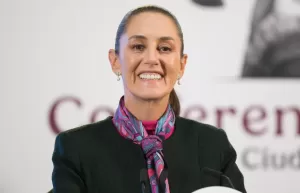Brett Wilkins; Ira Helfand
August 5, 2021: Peace advocates in Japan and around the globe on Friday marked the 76th anniversary of the U.S. atomic bombing of Hiroshima with renewed calls for a world free of nuclear weapons and the existential threat they pose to humanity.
Speaking at the event, Hiroshima Mayor Kazumi Matsui urged world leaders to support the Treaty on the Prohibition of Nuclear Weapons, a historic pact enacted in January and ratified by 55 nations—but none of the world’s nine nuclear powers, or Japan, which has for decades been under the U.S. nuclear umbrella.
“Nuclear weapons are the ultimate human violence,” said Matsui. “If civil society decides to live without them, the door to a nuclear-weapon-free world will open wide.”
Matsui’s call was echoed by world leaders and peace activists, including United Nations Secretary-General António Guterres, who hailed the “unparalleled advocacy” of the hibakusha, or atomic bombing survivors, as “a testament to the resilience of the human spirit.”
“They have dedicated their lives to sharing their experiences and campaigning to make sure no one else suffers their fate,” said Guterres. “The United Nations shares the hibakusha’s vision of a world without nuclear weapons.”
Other peace advocates shared similar pleas for a nuclear-weapons-free world. Politicians and elected officials around the world also called for the abolition of nuclear weapons.
Pak Nam-ju, an 88-year-old hibakusha, spoke out against nuclear weapons on this year’s anniversary, telling The Mainichi that “I will continue giving my testimony for as long as I can speak.”
The Mainichi reports:
“Born in Hiroshima, Pak is a second-generation “Zainichi” Korean, or a Korean resident of Japan. On August 6, 1945, when Pak was just a schoolgirl, the atomic bomb detonated when she was riding a streetcar about 1.9 kilometers [1.2 miles] west of the hypocenter. When she jumped off the streetcar, which had become enveloped in flames, she recalls, “Hiroshima was gone.” All the buildings in the city had been leveled in the blast, and Pak felt the blood drain from her face. It was when she was escaping toward the mountains northwest of the hypocenter that black rain fell on her.”
Pak—who gave birth to two stillborn babies after the war and suffered three bouts of cancer—said that “in just one blast, an entire city disappeared, and people were massacred. It was all too cruel.”
“Please carefully protect the peace that has been built on top of so much sorrow,” she added. “We must never allow nuclear weapons to be used again. That is my conviction.”
However, the world’s governments refuse to learn from the Hiroshima tragedy, and their nuclear policies are pushing the world towards a nuclear war.
William Perry, who served as Secretary of Defense under President Bill Clinton, says that we are closer to a nuclear war than we have ever been. “The likelihood today of a nuclear catastrophe is greater than during the Cold War,” Perry told an audience in Washington, D.C., early in the Trump Administration. “Today, inexplicably to me, we are recreating the geopolitical hostility of the Cold War and we are rebuilding the nuclear dangers of the Cold War. We are doing this without any serious public discussion, or any real understanding of the consequences of these actions: We are sleepwalking into a new Cold War, and there is a very real danger we will blunder into a nuclear war.”
Perry expounded on this theme recently in a Wall Street Journal op-ed co-written with former U.S. Secretary of State George Shultz and former U.S. Senator Sam Nunn, who chaired the Armed Services Committee. The trio warned that the world “may soon be entrenched in a nuclear standoff more precarious, disorienting, and economically costly than the Cold War.”
This sense of heightened danger is shared by the experts who set the Bulletin of the Atomic Scientists’ Doomsday Clock at two minutes to midnight in January 2018 and reaffirmed that decision in January of this year.
“Humanity now faces two simultaneous existential threats, either of which would be cause for extreme concern and immediate attention,” the group said. “These major threats—nuclear weapons and climate change—were exacerbated this past year by the increased use of information warfare to undermine democracy around the world, amplifying risk from these and other threats and putting the future of civilization in extraordinary danger.”
Among the factors driving concern upward were President Trump’s decision to unilaterally abandon the Iran nuclear deal and withdraw from the Intermediate-Range Nuclear Forces Treaty while joining other nuclear-armed countries in sweeping programs of “nuclear modernization.”
We have been incredibly fortunate throughout the nuclear weapons era. As Robert McNamara famously declared after the Cuban Missile Crisis, “We lucked out. It was luck that prevented nuclear war.” In January 1995, the United States launched a weather rocket from Norway that caused a false alarm in Moscow. We came within minutes of a full scale nuclear war—four years after the collapse of the Soviet Union and the end of the Cold War.
Today, at latest count, the nine nuclear nations maintain an arsenal of 14,500 nuclear weapons. The danger of them being used has increased dramatically in recent years. There is an urgent need to rebuild the broad public understanding of this danger to bring about fundamental change in nuclear policy and end that danger once and for all.
To erase the threat of unparalleled catastrophe that has existed since the dawn of the nuclear age, we must articulate a clear strategy to eliminate these weapons before they eliminate us.
Internationally, 122 nations voted in July 2017 to adopt the Treaty on the Prohibition of Nuclear Weapons, which bans the use and possession of nuclear weapons as well as activities that make it possible to build and maintain them. The ratification process is moving forward; when fifty nations formally ratify the treaty it will enter into force, creating a powerful new standard where it is the countries with nuclear weapons who are the ultimate “rogue states.”
Here in the United States, a grassroots campaign called Back from the Brink seeks to embrace the goals of the treaty with a “Green New Deal” for the nuclear threat, a comprehensive prescription for how to avoid nuclear war. It calls on the United States to recognize that nuclear weapons, far from being agents of our security, are in fact the greatest threat to our safety and must be eliminated as the only way to assure that they will not be used.
The core of the campaign is a five-point platform of policies that the United States should pursue. The central plank is to commence negotiations with the other eight nuclear weapons states for an enforceable, verifiable, timebound agreement to dismantle nuclear arsenals. There is no guarantee such an initiative will be successful, but there is no reason to assume that it will not be: It has never been tried.
The other four planks in the Back from the Brink platform are common-sense steps that can be taken to lessen the danger of nuclear war as these negotiations proceed and the weapons are being dismantled. They are:
i) The United States should adopt a No First Use policy, making it clear that it will not initiate nuclear war. ii) We should end the sole unchecked authority of any President to launch a nuclear attack. The Constitution provides unequivocally that only Congress can declare war, but current practice allows the President to initiate a nuclear attack without Congressional authorization.
iii) The U.S. nuclear arsenal should be taken off hair-trigger alert. Hundreds of warheads in both the United States and Russia are mounted on missiles that can be launched in fifteen minutes. This makes them vulnerable to cyber attack, accidents, and impulsive or unauthorized decisions. iv) The United States should cancel the plan to replace its entire nuclear arsenal with enhanced weapons.
The Back from the Brink campaign has been joined by many civic organizations, faith communities, and professional associations and has won the support of a rapidly growing list of cities, towns, and states. It was endorsed by unanimous votes of the U.S. Conference of Mayors, and the Baltimore, Los Angeles, and Washington, D.C., city councils and by an overwhelming vote of the California state legislature. It is currently before the state legislatures in Maine, Massachusetts, New Jersey, Oregon, Washington, and Vermont as well as many town and city councils.
Yet, obviously, despite this broad grassroots support, negotiations for the elimination of nuclear weapons will require a paradigm shift in the thinking of the leaders of nuclear-armed states, and aggressive leadership by at least one of the nuclear powers. They must be persuaded by the force of world opinion that nuclear weapons are not necessary for their safety.
(The above article has been compiled by us from: Brett Wilkins, “76 Years After Hiroshima Bombing, Fresh Call for End to All Nuclear Weapons”, published in Common Dreams, and Ira Helfand, “Ban the Bomb–Before Our Luck Runs Out”, published in The Progressive Magazine.)
❈ ❈ ❈
Martin Fleck, in another article, “What a Nuclear War Would Mean”, writes:
A nuclear attack on any city would be a humanitarian catastrophe. Modern nuclear weapons are fundamentally different from any other weapons in history, and just one of them could potentially wipe out an entire metropolis. The heat and blast effects from a modern weapon would indiscriminately kill tens of thousands to millions of civilians depending on the city’s density and the explosive power of the warhead.
A Physicians for Social Responsibility study modeled the humanitarian impact of detonating 300 Russian nuclear weapons over U.S. cities. The study found 75 to 100 million people would die within thirty minutes.
The so-called national defense policies of the nine nations with nuclear weapons include the ever-present threat of using them to burn to death millions of civilians who live in other nations. But since no one can actually win a nuclear war, the entire idea of achieving “security” through nuclear weapons is a false narrative. That’s why three-quarters of the nations on Earth have called for totally eliminating them. The Joint Statement on the Humanitarian Consequences of Nuclear Weapons, submitted to the United Nations General Assembly in 2014 and signed by 155 U.N. countries, puts it plainly: “The only way to guarantee that nuclear weapons will never be used again is through their total elimination.”
These are among the effects we could expect if a nuclear war were to happen:
A typical modern nuclear weapon can easily reduce the entire downtown of a city to rubble. Hiroshima was flattened by an American bomb with a “yield” equivalent to 15,000 tons of TNT. Modern thermonuclear weapons are many times more powerful. Current American and Russian land-based missiles carry warheads ranging from 100 to 800 kilotons. That’s six to fifty-three times the size of the Hiroshima bomb.
In Hiroshima, temperatures at ground zero were equivalent to the surface of the sun. If a modern weapon is detonated over a city, it will burn everything flammable in an area at least four miles across. The Hiroshima bomb immediately killed 70,000 people, mostly from burns. By the end of 1945, that death toll had doubled. “Each person who died had a name. Each person was loved by someone,” said survivor Setsuko Thurlow in a 2017 International Campaign to Abolish Nuclear Weapons address to the U.N. General Assembly after 122 countries had voted in favor of adopting the Treaty on the Prohibition of Nuclear Weapons.
Physicians and relief agencies such as the International Committee of the Red Cross warn that in the event of a nuclear attack, doctors and other health professionals would not be able to deliver medical assistance to immediate survivors. In Hiroshima, the atomic bomb killed or injured 90 percent of doctors and nurses in the area and destroyed 80 percent of the hospitals. Since there can be no meaningful medical response to a nuclear attack on a city, prevention is the only cure.
“Fallout” refers to lethal radioactive materials lofted into the air by the nuclear blast that eventually settle back to earth, often far from the target. If a modern nuclear weapon is used against a military base or city, the fallout plume could extend hundreds of miles downwind.
Scientific climate modeling demonstrates that in a nuclear war, the burning cities could inject enough soot and smoke into the stratosphere to blot out the sun, dramatically disrupt the climate, ruin crop production, and put billions of people at risk of starvation.
No one can confidently predict how a nuclear war might end. If nuclear weapons are used again, it could easily escalate to involve the big arsenals—thousands of nuclear weapons. It’s hard to imagine how civilization would survive the resulting apocalypse. Here’s the thing to remember: If the missiles take flight, we’ll all become peace activists. But it will be too late.
(Courtesy: The Progressive Magazine.)




